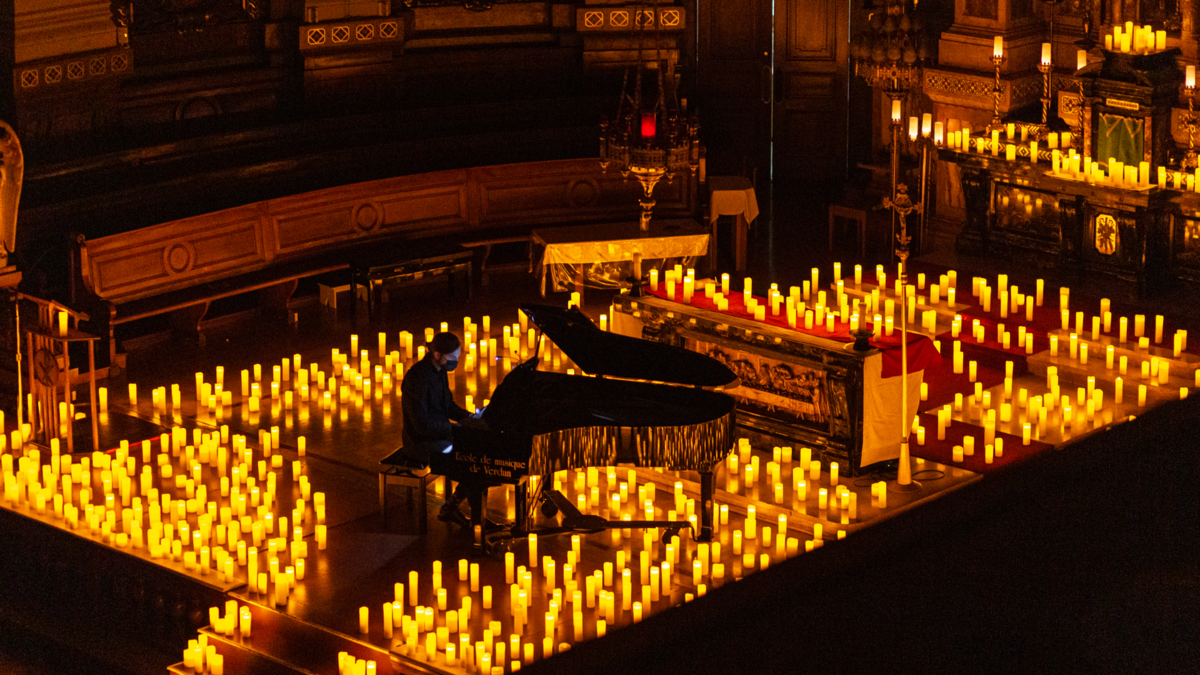
The use of candles in films
The use of candles in films as a lighting technique is often employed to create specific moods, atmospheres, or visual effects. Candles can evoke a sense of warmth, intimacy, and nostalgia, adding a unique visual element to scenes. Here’s an explanation of how candles are used for lighting in films:
1. Ambiance and Mood: Candles emit a soft, flickering light that can set the mood of a scene. They create an intimate and romantic atmosphere, perfect for scenes of quiet conversations, dinners, or romantic encounters. The gentle glow can enhance emotions and draw viewers into the characters’ emotions and interactions.
2. Low Lighting and Shadows: Candles provide a low and dim light source that can cast intriguing shadows and highlights on the actors’ faces and surroundings. This can add depth and mystery to a scene, emphasizing certain facial expressions or gestures.
3. Historical or Period Settings: Candles are often used in period films to accurately recreate lighting conditions of a specific era, such as medieval times or the Victorian era. This helps in immersing viewers in the historical context of the story.
4. Symbolism: Candles can symbolize various concepts such as hope, spirituality, or vulnerability. In certain scenes, candles may be used to underscore a character’s emotional state or to foreshadow events.
5. Visual Aesthetics: The visual aesthetics of candles and their gentle flickering can contribute to the overall beauty of a scene. Their warm tones and soft light can create visually pleasing compositions that enhance the cinematography.
6. Romantic Scenes: Candles are often associated with romantic moments. Their presence can intensify the emotional connection between characters during love scenes or moments of intimacy.
7. Dramatic Tension: The contrast between light and shadow created by candlelight can intensify dramatic tension in a scene. The limited visibility can add an element of uncertainty or suspense.
8. Practical Challenges: Filmmakers may face challenges when using real candles, such as managing the flame, controlling lighting consistency, and ensuring safety. In some cases, LED or artificial candles are used to address these concerns while maintaining the desired visual effect.
Overall, the use of candles as a lighting element in films is a creative choice that can significantly impact the visual and emotional experience for the audience. It adds depth, ambiance, and a sense of authenticity to scenes, contributing to the overall storytelling and cinematic experience.
The use of candles in films as a lighting technique is often employed to create specific moods, atmospheres, or visual effects. Candles can evoke a sense of warmth, intimacy, and nostalgia, adding a unique visual element to scenes. Here’s an explanation of how candles are used for lighting in films:
1. Ambiance and Mood: Candles emit a soft, flickering light that can set the mood of a scene. They create an intimate and romantic atmosphere, perfect for scenes of quiet conversations, dinners, or romantic encounters. The gentle glow can enhance emotions and draw viewers into the characters’ emotions and interactions.
2. Low Lighting and Shadows: Candles provide a low and dim light source that can cast intriguing shadows and highlights on the actors’ faces and surroundings. This can add depth and mystery to a scene, emphasizing certain facial expressions or gestures.
3. Historical or Period Settings: Candles are often used in period films to accurately recreate lighting conditions of a specific era, such as medieval times or the Victorian era. This helps in immersing viewers in the historical context of the story.
4. Symbolism: Candles can symbolize various concepts such as hope, spirituality, or vulnerability. In certain scenes, candles may be used to underscore a character’s emotional state or to foreshadow events.
5. Visual Aesthetics: The visual aesthetics of candles and their gentle flickering can contribute to the overall beauty of a scene. Their warm tones and soft light can create visually pleasing compositions that enhance the cinematography.
6. Romantic Scenes: Candles are often associated with romantic moments. Their presence can intensify the emotional connection between characters during love scenes or moments of intimacy.
7. Dramatic Tension: The contrast between light and shadow created by candlelight can intensify dramatic tension in a scene. The limited visibility can add an element of uncertainty or suspense.
8. Practical Challenges: Filmmakers may face challenges when using real candles, such as managing the flame, controlling lighting consistency, and ensuring safety. In some cases, LED or artificial candles are used to address these concerns while maintaining the desired visual effect.
Overall, the use of candles as a lighting element in films is a creative choice that can significantly impact the visual and emotional experience for the audience. It adds depth, ambiance, and a sense of authenticity to scenes, contributing to the overall storytelling and cinematic experience.
